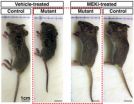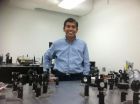(Press-News.org) The registry is part of the European Society of Cardiology (ESC) EURObservational Research Programme (EORP) of surveys and registries.
Today's presentation reveals current usage of the most modern TAVI valves and catheters in Europe, and compares indications, techniques and outcomes between different countries. "TAVI is a new technology which has been introduced in Europe but many question marks remain on which patients are most suitable," said Professor Di Mario. "We set up this registry because it was important to have a clear picture of clinical practice in Europe. Since our study was conducted during 2011-2012 we only included the very latest valves and delivery systems and this, together with the increased operator experience, probably explains the reduction in complications from previous studies and registries."
The registry included 4,571 patients who underwent the TAVI procedure using the Sapien XT or the CoreValve between January 2011 and May 2012. Patients were from 137 centres in Israel and 9 countries in Europe (Czech Republic, France, Spain, Switzerland, UK, Italy, Poland, Belgium, Germany).
The average age of patients was 81.4±7.1 years, with equal numbers of men and women. There was a high prevalence of comorbidities in all patients, but patients who were 80 years old or younger had a greater incidence of diabetes, COPD, extracardiac arteriopathy (carotid, peripheral), permanent renal dialysis, previous myocardial infarction, previous cardiac surgery or percutaneous coronary intervention (PCI), previous aortic valve replacement (valve-in-valve procedure). Professor Di Mario said: "This shows that the use of TAVI in younger patients has been restricted to those with more comorbidities, who therefore have high surgical risks."
Overall in-hospital mortality was 7.4%. There were no significant differences in in-hospital mortality based on valve type (6.7% CoreValve, 7.9% Sapien XT, p=0.15) but there were significant differences based on the approach site (transfemoral 5.9%, transapical 12.8%, trans-subclavian and other approaches 9.7%, p END
TAVI restricted to very old or very sick patients
2012-08-29
ELSE PRESS RELEASES FROM THIS DATE:
Added benefit of fampridine is not proven
2012-08-29
Fampridine (trade name Fampyra®) has been approved in Germany since July 2011 for adult patients suffering from a higher grade walking disability (grades 4 to 7 on the EDSS disability status scale), as a result of multiple sclerosis (MS). The German Institute for Quality and Efficiency in Health Care (IQWiG) has assessed the added benefit of the drug pursuant to the Act on the Reform of the Market for Medicinal Products (AMNOG). According to the findings, there is no proof of added benefit, as the manufacturer's dossier contains no evaluable study data for the comparison ...
Could a cancer drug potentially prevent learning disabilities in some kids?
2012-08-29
ANN ARBOR, Mich. — A drug originally developed to stop cancerous tumors may hold the potential to prevent abnormal brain cell growth and learning disabilities in some children, if they can be diagnosed early enough, a new animal study suggests.
The surprising finding sets the stage for more research on how anti-tumor medication might be used to protect the developing brains of young children with the genetic disease neurofibromatosis 1 -- and other diseases affecting the same cellular signaling pathway.
The findings, made in mice, are reported in the journal Cell ...
Belimumab for lupus erythematosus: Added benefit not proven
2012-08-29
Belimumab (trade name Benlysta ®) has been approved since July 2011 as an add-on therapy for adult patients with the autoimmune disease systemic lupus erythematosus (SLE). This monoclonal antibody is only considered as treatment when the disease is still active in spite of standard therapy. The German Institute for Quality and Efficiency in Health Care (IQWiG) has now examined the added benefit of this drug pursuant to the Act on the Reform of the Market for Medicinal Products (AMNOG).
According to the findings, there is no proof that belimumab provides added benefit ...
Mount Sinai researchers solve mystery surrounding the death of two sisters nearly 50 years ago
2012-08-29
Researchers at Mount Sinai School of Medicine have identified the genetic cause of a rare and fatal bone disease by studying frozen skin cells that were taken from a child with the condition almost fifty years ago. Their study, which details how the MT1-MMP gene leads to the disease known as Winchester syndrome, appears in the August 23, 2012 online edition of The American Journal of Human Genetics.
In 1969, Patricia Winchester, MD, a pediatric radiologist in New York City, was asked to diagnose two young sisters who were losing bone in their hands and feet, developing ...
Biomass characterization technology research highlighted in Industrial Biotechnology journal
2012-08-29
New Rochelle, NY, August 29, 2012--Biomass recalcitrance--the problem of how to break down complex plant-based cellulosic feedstock into sugars that can be fermented to produce sustainable biofuels and other renewable biobased products—can be overcome through improved methods of biomass characterization. IB IN-DEPTH, a collection of articles from leading research laboratories describing advanced tools and techniques for analyzing the chemistry, structure, and interaction of biomass components, is published in Industrial Biotechnology, a peer-reviewed journal from Mary Ann ...
Chimpanzees create social traditions
2012-08-29
A research collaboration between the Gonzaga University and the Max Planck Institute shows that the way in which chimpanzees groom each other depends on the community to which they belong. Specifically, it is the unique handclasp grooming behaviour that reveals this local difference.
The specific behaviour that the researchers focused on was the 'grooming handclasp', a behaviour where two chimpanzees clasp onto each other's arms, raise those arms up in the air, and groom each other with their free arm. This behaviour has only been observed in some chimpanzee populations. ...
Breakthrough in nanotechnology
2012-08-29
A University of Central Florida assistant professor has developed a new material using nanotechnology, which could help keep pilots and sensitive equipment safe from destructive lasers.
UCF Assistant Professor Jayan Thomas, in collaboration with Carnegie Mellon University Associate Professor Rongchao Jin chronicle their work in the July issue of the journal Nano Letters. (http://dx.doi.org/10.1021/nl301988v)
Thomas is working with gold nanoparticles and studying their properties when they are shrunk into a small size regime called nanoclusters. Nanoparticles are already ...
Soaking up the Sun
2012-08-29
Solar panels, like those commonly perched atop house roofs or in sun-drenched fields, quietly harvesting the sun's radiant energy, are one of the standard-bearers of the green energy movement. But could they be better – more efficient, durable and affordable? That's what engineers from Drexel University and The University of Pennsylvania are trying to find out, with the aid of a little nanotechnology and a lot of mathematical modeling.
A three-year grant from the National Science Foundation has set the team on a track to explore ways to make new photoelectric cells more ...
TacSat-4 participates in Navy fleet experiment Trident Warrior
2012-08-29
WASHINGTON –- U.S. Naval Research Laboratory's Tactical Satellite-4 successfully completes three weeks of intense testing, June 28, as part of the Navy's annual Trident Warrior Experiment 2012 (TW12). TacSat-4 is a Navy-led Joint mission that provides Ultra High Frequency (UHF) satellite communications (SATCOM).
Sponsored by Navy Warfare Development Command, Trident Warrior is an annual fleet experiment focused on gaining valuable insights to improve future capability investments. This year's agenda included at-sea experimentation of critical maritime initiatives, and ...
Many trendy 'microgreens' are more nutritious than their mature counterparts
2012-08-29
The first scientific analysis of nutrient levels in edible microgreens has found that many of those trendy seedlings of green vegetables and herbs have more vitamins and healthful nutrients than their fully grown counterparts. A report on the research appears in ACS' Journal of Agricultural and Food Chemistry.
Qin Wang, Gene E. Lester and colleagues point out that microgreens have gained popularity as a new culinary trend over the past few years, especially in upscale markets and restaurants. Those seedlings of spinach, lettuce, red cabbage and other veggies are usually ...



